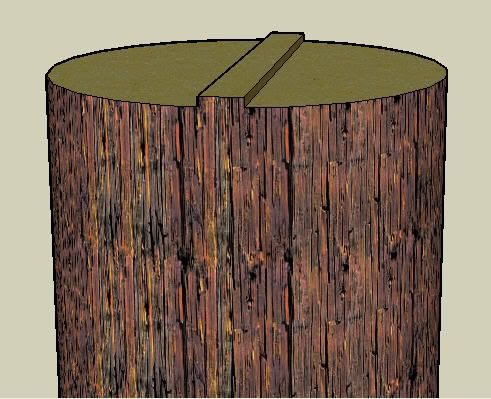murphy4trees
Addicted to ArboristSite
Pg 309 of Gerry Breranek's book, "the fundamentals of general tree work", describes the coos bay cut which is primarily used as a safe wat to fall heavy head leaners, because it minimizes the risk of barber chairing or splitting the trunk. The basic idea is to leave a thin strip of holding wood down the middle of the tree, directly in line with the direction of lean. SO for example if the tree was leaning north, the faller would cut in from both sides (east and west)with just a straight kerf cut, leaving a 2-4" strip of wood running down the middle of the tree from south to north... Then the tree would be tripped by cutting that strip from the back side, south) until the tree just pops off the stump. Very little fiber pull and very little chance of splitting the trunk, though Beranek warns that side weight can cause the tree to twist and split.
I mostly use this cut when trimming logs to length for the mill, because it prevents the logs from splitting, and leaves a nice clean cut.
Today I was taking down a 85-95' backyard locust, with a big nasty old rip up about 65-75' from some old storm damage. There didn;t look like there was much decay, and locust is strong wood, and still I wasn't wanting to climb any higher if I didn;t need to...
The remainder of the top had a fair lean, and I could have easily notched it in the direction of lean, but there were a couple other trees nearby and it would have fallen into some of their upper limbs causing minor damage most likely. It did occur to me though that if the tips hung up long enough for the but to swing out, when the top broke free the tips could end up coming back at me. So the optimal cut would have the limb fall striaght down, where it wouldn't reach the tips of the nearby trees...
The coos bay worked like a charm... the top just popped off the cut and fell straight down in its tracks... Its a pretty good cut for head leaners in the tree, though here I was using it more to get the piece to drop straight than to prevent barber chairing. Good to add to the bag of tricks and faster than cutting a notch and plunge cutting for a back release..
I mostly use this cut when trimming logs to length for the mill, because it prevents the logs from splitting, and leaves a nice clean cut.
Today I was taking down a 85-95' backyard locust, with a big nasty old rip up about 65-75' from some old storm damage. There didn;t look like there was much decay, and locust is strong wood, and still I wasn't wanting to climb any higher if I didn;t need to...
The remainder of the top had a fair lean, and I could have easily notched it in the direction of lean, but there were a couple other trees nearby and it would have fallen into some of their upper limbs causing minor damage most likely. It did occur to me though that if the tips hung up long enough for the but to swing out, when the top broke free the tips could end up coming back at me. So the optimal cut would have the limb fall striaght down, where it wouldn't reach the tips of the nearby trees...
The coos bay worked like a charm... the top just popped off the cut and fell straight down in its tracks... Its a pretty good cut for head leaners in the tree, though here I was using it more to get the piece to drop straight than to prevent barber chairing. Good to add to the bag of tricks and faster than cutting a notch and plunge cutting for a back release..





